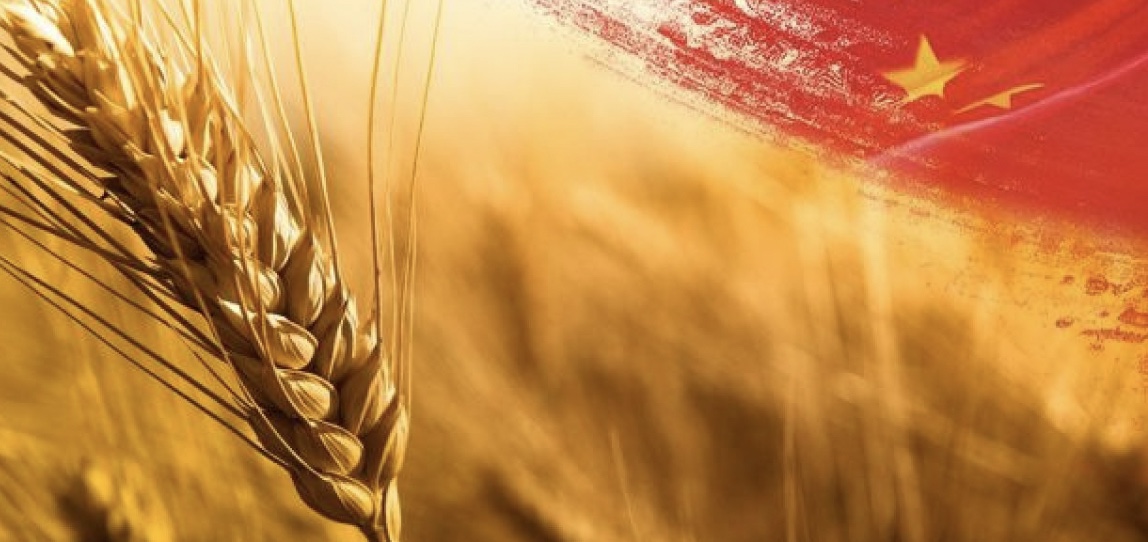Black Box China: The truth about China’s grain harvest and imports

China reports a bumper wheat harvest. At the same time, imports are growing rapidly and wheat prices remain very high. Massive rainfall during the harvest apparently led to very high quality losses. This has implications for the global market.
China reports a near-record wheat harvest. The most important growing regions suffered from heavy rains before the harvest. But the provincial governments are obviously reporting the harvest volumes that are expected of them – or that are indicated by the plan.
But quantity says nothing about quality and thus the need for imports. And this has been clearly evident in the last few weeks. China has also recently bought large quantities of wheat and barley in Europe, i.e. in France. China is increasingly becoming a major player in the global wheat trade – it is likely to become the largest international importer of wheat in the 2023/24 marketing year, analysts say.
The most important suppliers so far are Australia and France. Last year’s record harvest and good quality of the crop surprisingly did not lead to a decline in wheat prices, which were very high by international standards.
The price of wheat from the last harvest was $435 (3000 yuan) per ton in June 2022 and rose to more than $464 (3200 yuan) per ton in early 2023, according to the USDA office in Beijing.
At the same time, wheat prices are more than $43 higher than corn, pushing wheat out of feed rations. However, in the first half of 2023, domestic wheat prices fell again by 79 USD (550 yuan) per ton.
Wheat quality: germination, mold and mildew formation
At the end of May, Henan, the province with the largest wheat production in China (a quarter of all wheat), experienced heavy rains for six days.
The so-called “lazy rain” was the heaviest in a decade, according to the Beijing office of the U.S. Department of Agriculture (USDA). This led to waterlogging, wheat germination, mold and mildew. Wet and flooded soil hampered harvesting, and the lack of drying facilities and equipment limited recovery efforts after the rains.
According to the USDA analysis, rains in late May and early June affected more than 30 percent of the new wheat crop in other major provinces of China, resulting in an unprecedentedly high percentage of sprouted wheat.
At harvest in areas south of Huanghe, germination rates were over 50 percent. Due to the large volume of low-quality wheat, the need to import quality wheat for food production is growing.
In addition, the USDA expects corn to be replaced by wheat in feed rations.
Import demand is higher than stated
In October, the USDA estimated wheat imports in 2023/24 marketing year at “only” 11 million tons, down almost 2 million tons from the previous year. Now most analysts assume that the import requirements will be much higher. Current purchases also confirm this.The People’s Republic of China’s wheat imports in FY2022/23 totaled nearly 14 million tons, well above the government’s tariff rate quota (TRQ) of 9.636 million tons, which is part of the country’s commitment to join the World Trade Organization.More than 40 percent of imported wheat has recently come from Australia. Another important supplier of wheat is France (also barley). Germany is still banned from supplying Ukraine because, unlike France, there are no bilateral or phytosanitary agreements or contracts with Germany.Most of the imported wheat is of high quality and is intended for flour production, with only a small percentage going to feed mills.
Half of the world’s stocks in China
China has the largest wheat reserves in the world. No one knows exactly how much it is. Last year, the U.S. Department of Agriculture estimated the amount at 139 million tons, which would be a little more than half of the world’s wheat reserves.
But analysts expect that this year’s wheat stocks will decrease by 6 million tons. This is due, among other things, to high domestic wheat prices. And to continued high consumption.
Many observers suspect that the authorities will try to replenish state stocks as soon as possible, as reliable grain supplies remain a top priority. For this reason, the Chinese authorities suspended the wheat auctions for the 2022/23 fiscal year at the end of April, a month earlier than in the previous year.
Read also
Wheat in Southern Brazil Impacted by Dry Weather and Frosts
Oilseed Industry. Leaders and Strategies in the Times of a Great Change
Black Sea & Danube Region: Oilseed and Vegoil Markets Within Ongoing Transfor...
Serbia. The drought will cause extremely high losses for farmers this year
2023/24 Safrinha Corn in Brazil 91% Harvested
Write to us
Our manager will contact you soon



